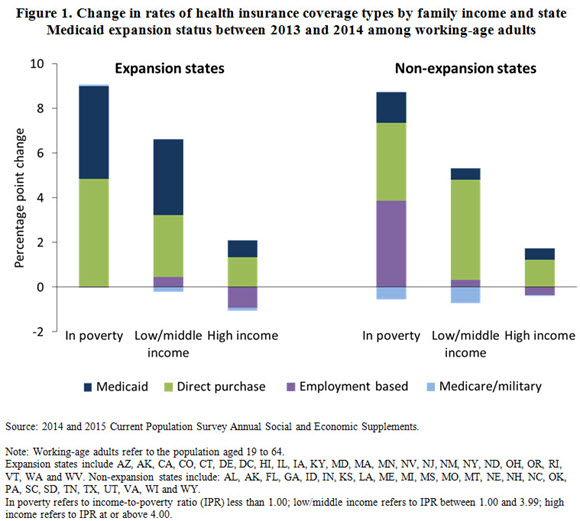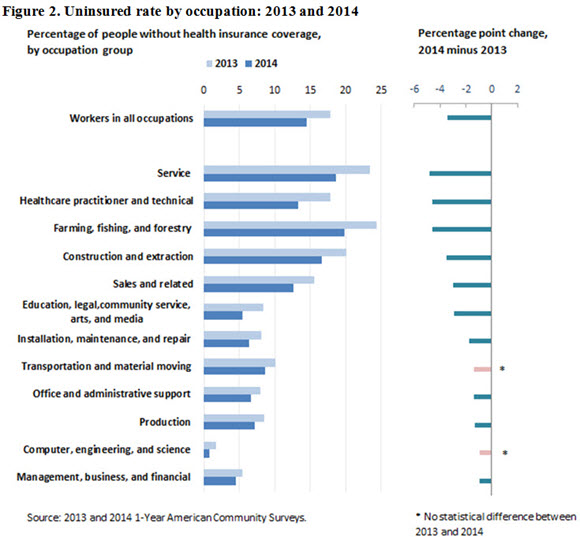Health Insurance Disparities are Closing Among Working-Age Adults
Health Insurance Disparities are Closing Among Working-Age Adults
Note: This blog is based on ongoing research.
Between 2013 and 2014, the share of people without health insurance, or uninsured rate, decreased by 2.9 percentage points overall to 10.4 percent. This unprecedented decline in the uninsured rate occurred at the same time as many provisions of the Affordable Care Act went into effect. Many of these provisions targeted working-age adults, who experienced the largest changes in health insurance coverage. Two presentations at the Population Association of America meetings this week take a closer look at changes experienced by the working-age population.
Health Insurance Disparities and the Affordable Care Act: How Did Inequality Decline? finds that as the uninsured rate fell, most disparities in health insurance coverage within the working-age adult population also decreased. Notably, the gap in the uninsured rate between those at the lowest and highest ends of the income spectrum narrowed considerably.
On Jan. 1, 2014, 24 states and the District of Columbia expanded Medicaid eligibility to low-income working-age adults, while 26 states did not. Did adults in expansion states experience a greater increase in health insurance coverage than in non-expansion states?
This working paper finds that while decreases in the uninsured rate among working-age adults in Medicaid expansion states were sometimes greater than in non-expansion states, most disparities in health insurance coverage declined in parallel between expansion and non-expansion states. Decreases in the uninsured rate among working-age adults were primarily due to increases in Medicaid and direct-purchase coverage in expansion states; in non-expansion states, increases in direct-purchase coverage accounted for almost all of the total change in the uninsured rate, while the increase in employment-based health insurance coverage mattered for key groups, such as adults in poverty (See figure 1).
How Did the Affordable Care Act Affect Workers in 2014? A Closer Look at Detailed Occupations and Health Insurance Coverage investigates the disparity of health insurance coverage among workers in different occupations. This analysis finds that most occupations showed a significant decline in the percentage uninsured between 2013 and 2014, with no occupation experiencing an increase in the uninsured rate. In general, occupations with higher uninsured rates in 2013 experienced larger improvements (See figure 2).
Within occupations, the changes were most notable for people who worked less than full time, year round. Across occupations, those with lower median earnings experienced more change than occupations with higher median earnings. Findings were mixed for employment-based coverage: while some occupations showed a decline in the rate of employer-provided health insurance, many others showed a significant increase in this kind of insurance.
To learn more about these analyses, visit:
Also see this Research Matters blog:







